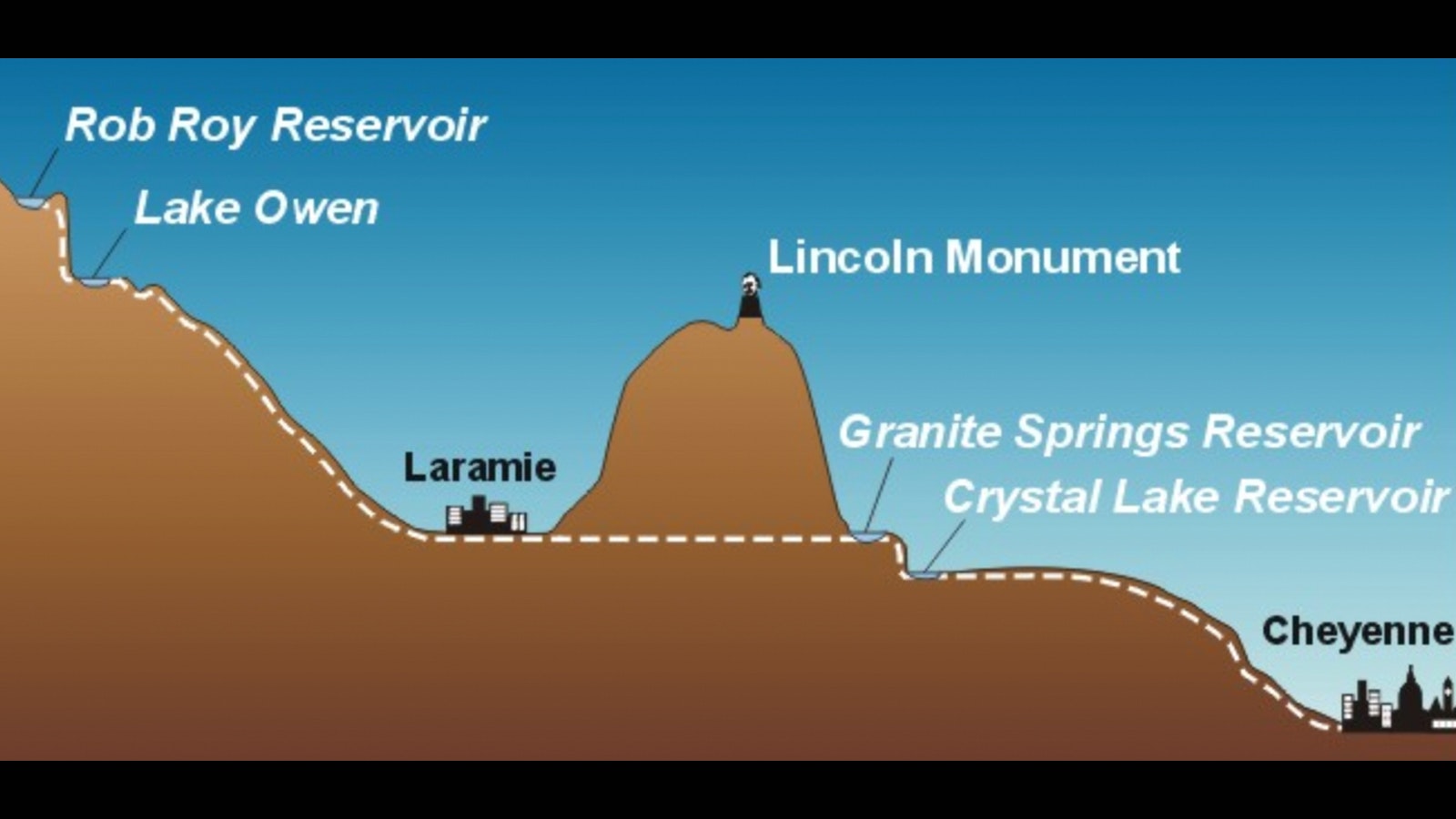Cheyenne might be a long way from the Wyoming headwaters of the Colorado River, but the city is linked to the river’s shrinking supply against ever-more-pressing downstream demands, and the resulting conflicts.
For decades, Cheyenne has sourced up to 70% of its total water supply from the Colorado River drainage, albeit indirectly. That could start drying up, possibly by 2028. That potential has the city is looking for alternatives.
“Who would have thought that 70 years ago we’d be in this situation, but we are,” Cheyenne Mayor Patrick Collins told Cowboy State Daily. “We’re looking for drainages in this area that could compliment those (Colorado River) waters.”
Water in the city and much of the surrounding area is supplied thorough the Cheyenne Board of Public Utilities (BOPU).
“One in seven people in Wyoming get their water from (BOPU),” Collins said.
New Watering Restrictions
For now, Cheyenne has plenty of water, he said.
Cheyenne is allotted a total of 22,000 acre-feet per year, and for the last 20 years has consistently used about 14,000 acre-feet. However, if the Colorado River supply is cut off, Cheyenne would be left with only 7,000 acre-feet, Collins said.
And acre foot is the amount of water that would flood an acre of land to the depth of 1 foot.
About 5,000 of the 14,000 acre-feet that have typically been used each year is for “irrigation,” or people watering lawns and trees, he said.
The city has had watering restrictions in place for about 20 years, and will expand them starting April 1.
The policy change isn’t tied to the Colorado River situation, Collins said. Instead, it’s part of a larger push to get residents to use water more responsibly in Cheyenne’s arid climate.
“We’re not out doing the ‘water police’ thing at this point, because we still have ample water,” he said.
Under the new restrictions, residents may water three days per week between April 1 and Nov. 30, BOPU spokeswoman Erin Lamb told Cowboy State Daily. Watering won’t be allowed between 10 a.m. and 6 p.m., to mitigate loss from evaporation.
Lawns may not be watered between Dec. 1 and March 31, but people should keep watering their trees during that timeframe, Lamb said.
‘Gallon-For-Gallon’ Trade
Cheyenne’s links to the Colorado River are complicated, BOPU Director Brad Brooks told Cowboy State Daily.
They originate with the Little Snake River in Western Wyoming.
The Little Snake flows into the Yampa River, which flows into the Green River, which in turn flows into the Colorado.
Water from the Little Snake River is piped from the western side of the Continental Divide through a ¾-mile long tunnel near Encampment, Brooks said. From there, it flows into Hog Park Reservoir, then into the Encampment River and finally into the North Platte River.
However, Cheyenne is supplied through Rob Roy Reservoir in the Snowy Range Mountains, Brooks said. Water flows from there into the Douglas drainage and also into the North Platte.
There is a “gallon-for-gallon” trade between the water coming out of the Little Snake River and that coming out of Rob Roy Reservoir, he said.
The system dates back to the 1960s, and water rights that were drawn up in the 1950s, Brooks said.
Other Options
Cheyenne owes its growth to those who came up with that piping and water trading system, he said.
“We weren’t going to get by on, as we jokingly call it, ‘the mighty Crow Creek,’” he said in reference to the South Platte River tributary near Cheyenne. “We wouldn’t be here today if they hadn’t thought of that” system and water trade from the Little Snake River and Rob Roy.
However, with Cheyenne expected to keep growing, and a possible curtailment of rights to the Colorado River drainage looming, it’s time to start thinking of a new plan, Brooks said.
“The earliest the curtailments (from the Colorado River) would probably be in 2028. We’re just trying to be proactive and see what other options are out there,” he said.
That’s included inquiries with other municipalities, was well as some private sources, such as ranches, Brooks said.
‘Junior Rights’
Conflict over water rights on the Colorado River have been heating up as supplies continue to shrink, particularly among the Lower Colorado River Basin states such as Arizona and California.
Wyoming is under the binding obligations of the Colorado River Compact.
The compact is an agreement forged in 1922, dividing water rights and downstream flow obligations along the Colorado River and its headwaters between Wyoming, Colorado, Utah, New Mexico, Arizona, Nevada, California and Mexico.
Some water use and legal experts have told Cowboy State Daily the compact ties Wyoming, as a headwaters state, to the fate of the entire Colorado River Drainage, which has been increasingly short of water in recent years.
And most recently, a case before the U.S. Supreme Court claims that the state of Arizona should supply more clean drinking water from the river to the Navajo Nation.
There’s been some concern that could blow the Colorado River Compact and leave Arizona demanding more water from other states, possibly including Wyoming.
‘Worst-Case Scenerio’
If the downstream turmoil leads to curtailment of water rights on the Little Snake River, it will be “the most junior water rights” that are curtailed first, Brooks said. That’s according to the old water rights standard of “first in time is first in line.” Or, those with the newest or more junior rights will have to yield to those whose water rights date back earlier.
If the cuts come, Cheyenne might lose only some of its rights to the Little Snake River, Brooks said.
“There are a lot of industrial users with rights that are more junior than Cheyenne’s,” he said, adding that it’s still wise to plan on the assumption that all of Cheyenne’s water rights will be curtailed.
“We’re planning on that sort of worst-case scenario,” Brooks said.





